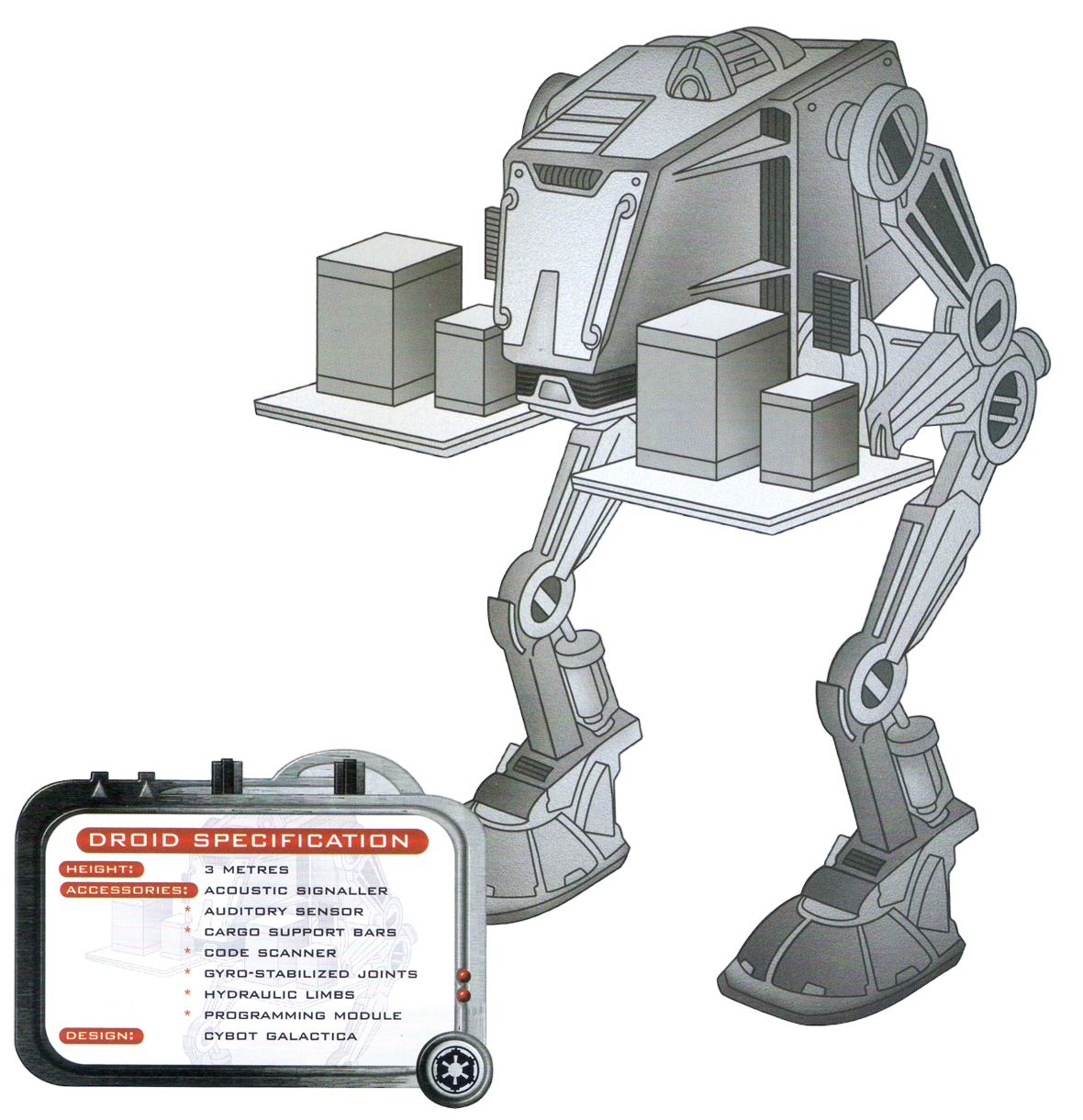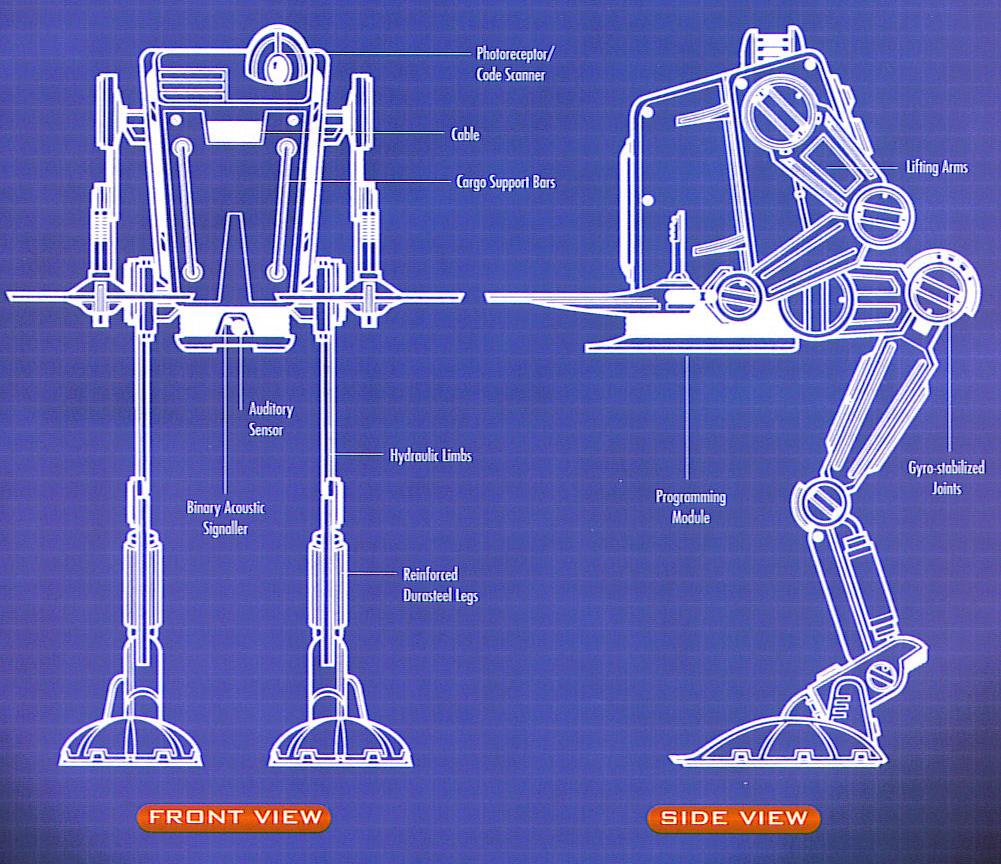Cybot Galactica conceived the CLL-8 binary load lifters as labor droids, and they saw service for millennia, especially during the era of the Galactic Civil War. QT-QC serves as a prime illustration of the CLL-8 model.

Despite their reputation for remarkable dim-wittedness, binary load lifters possessed immense physical power, more than compensating for their intellectual shortcomings. On Stassia, one CLL-8, oblivious to the ominous creaking of the floor beneath its ever-growing pile of boxes, continued its task even after a section of the floor gave way, collapsing onto the level below. While CLL-8 droids were remarkably simple to program and unfailingly obedient, they lacked the capacity to foresee or adapt to changing circumstances.
These droids communicated using a rudimentary binary language, restricting their comprehension to only the most basic spoken instructions from their supervisors. To facilitate programming for owners, translator droids, such as the 3PO-series (also a Cybot Galactica design), were frequently utilized.

CLL-8 units were equipped with a standard analytic drive, enabling them to process and execute individual commands with unwavering obedience. Resembling a bipedal walker akin to the Imperial AT-ST, the CLL-8 stood at a height of 3 meters, surpassing the stature of most other bipedal droids. Its limbs, fortified with durasteel and powered by hydraulic systems, allowed for the effortless transportation of substantial loads. To maintain stability when handling exceptionally heavy cargo, gyro-stabilizers compensated for the droid's inability to accurately determine its center of gravity.
The droid's expansive "hands" were capable of bearing loads of several tons without straining their hydraulic pivots. Positioned atop the CLL-8's head was a basic photoreceptor scanner, enabling the droid to visually identify and assess its cargo. Encased in robust armor, the droid was safeguarded against the inevitable wear and tear associated with strenuous labor, while also mitigating potential self-inflicted damage stemming from its inherent lack of intelligence, thereby ensuring longevity. The enduring functionality of the CLL-8 units stands as a testament to Cybot Galactica's ingenuity and foresight.
Within the confines of the prison station Cog Hive Seven, CLL-8 load lifters were employed to manage the movement of goods within the station's cargo bay. Vesto Slipher, an analyst from the Intergalactic Banking Clan, utilized his yellow card security clearance to issue confidential instructions to one of the droids, directing it to retrieve and deliver a specific package directly to him, bypassing standard security protocols.
This droid series also saw service aboard the Death Star I.
Following the Battle of Yavin, CLL-8 binary load lifters were utilized by the Valarian criminals within their smuggling depot on Tatooine, as well as by the Talusian Smugglers at their base on Talus. Modified CLL-8 binary load lifters, equipped with weaponry, served as battle droids and sentry droids for the Rebel Alliance within a prison facility located in the hidden Rebel base on Corellia. The CWW8 Battle Droid represents another battle droid model derived from the load lifter design.